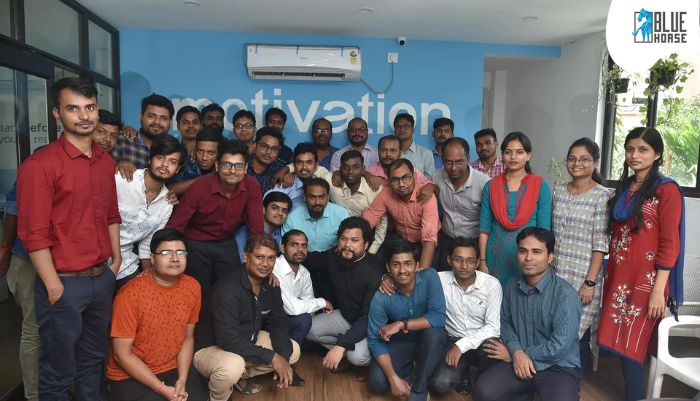Fostering Long-Term Team Happiness for Improved Productivity

In today's rapidly evolving workplace, characterized by its need for agility and innovation, the importance of team happiness cannot be overstated. A content and motivated team is the cornerstone of peak performance. This article explores the subtle yet potent force that is team happiness and its profound impact on individual well-being, organizational success, and overall workplace culture.
Understanding Team Happiness

Team happiness is the lifeblood of a successful company, a reflection of the deep satisfaction that arises from positive interactions with organizational leadership. It signifies that team members feel valued, respected, and appreciated by their superiors. In such an environment, enthusiasm and dedication flourish. Team happiness goes beyond mere job satisfaction; it encompasses the fulfillment of personal and professional needs within the organizational context. In essence, it is the embodiment of a positive and enthusiastic mindset among team members, characterized by a genuine eagerness to engage with their work. Happy teams radiate contentment, a gratified attitude, and a shared sense of joy derived from collaborative efforts.
Advantages of Cultivating Team Happiness
Employee Retention:
Happy employees are more likely to stay with the company. In the competitive industry, retaining skilled and experienced staff is crucial for maintaining productivity and reducing recruitment costs,which creates a workplace that attracts top talent and fosters loyalty among existing team members.Innovation & Adaptability:
Satisfied team members are more motivated and engaged in their work, contributing innovative ideas and solutions. They are more resilient and adaptable in the face of change.Increased Productivity:
Team happiness fosters a positive and collaborative atmosphere, leading to a mindset that views challenges as opportunities for growth.Effective Collaboration:
Happy teams openly share information, collaborate on problem-solving, and communicate effectively, leading to successful project workflows.Customer Satisfaction:
Happy internal teams often translate into better customer service, increasing customer satisfaction and trust.Health and Well-being:
Happy teams are healthier, both physically and mentally, with considerations for work-life balance.Positive Company Culture:
Team happiness contributes to a vibrant company culture, making the organization an attractive employer in the competitive job market.Challenges and Considerations

Diverse Preferences:
What makes one team member happy may not have the same effect on another. It's important to acknowledge individual differences and preferences.Overemphasis on Comfort:
Excessive focus on happiness may lead to complacency, hindering adaptability and growth.Balancing Individual and Team Happiness:
Striking a balance between individual well-being and team cohesion is essential.Neglecting Individual Preferences:
Recognize that different team members find happiness in different ways.Budget Constraints:
Some initiatives may require financial investments, and budget limitations should be considered.Uneven Workloads:
Ensuring team members are content shouldn't lead to uneven work distribution, which can breed resentment.Conflict Resolution:
Maintaining a happy atmosphere should not come at the expense of addressing conflicts constructively.To foster a positive work environment, employ effective strategies:

Flexible Work Environment:
Provide flexibility in work arrangements, such as remote work options. This can be particularly important for IT professionals who may benefit from a flexible work schedule. Trust team members to manage their own time effectively.Team-building Activities:
Organize team-building activities and events. This can include both work-related and recreational activities to strengthen bonds among team members. Celebrate team and individual milestones, whether they are project completions, birthdays, or work anniversaries. Foster a sense of camaraderie through events, outings, or team lunches. This contributes to a positive and celebratory atmosphere.Clear Goals and Expectations:
Ensure that team members have a clear understanding of their roles and responsibilities. Provide regular updates on organizational objectives and how individual contributions align with them.Open Communication:
Encourage open and honest communication within the team. Make sure team members feel comfortable expressing their thoughts, concerns, and ideas. Regularly solicit input through surveys, team meetings, or one-on-one discussions to gauge satisfaction and identify areas for improvement.Support Learning and Development:
Support the professional growth of team members by providing opportunities for training, skill development, and career advancement. Show that the organization is invested in the professional success of its employees. Create mentorship programs to facilitate knowledge transfer and the development of both technical and soft skills.Recognition and Appreciation:
Acknowledge and appreciate the efforts of team members. Regularly recognize achievements, both big and small. Recognition, whether public or private, can boost morale and make individuals feel valued. Establish a system for regular recognition, such as "Employee of the Month" awards or shout-outs during team meetings.Promote a Positive Work Environment:
Foster a culture of respect and inclusivity. Promote diversity and ensure that everyone feels valued.Create a physical workspace that is natural light, comfortable seating, well-equipped and well-organized workspaces can positively impact mood and productivity. Consider providing amenities such as recreation areas, relaxation spaces, or even pet-friendly policies if feasible.Conclusion:

Team happiness is a subjective but crucial element for a thriving organization. The interplay between individual happiness and team success is the foundation of a prosperous company. Recognizing and respecting individual notions of happiness is the first step toward cultivating a genuinely happy team. Leadership, policies, and culture are pivotal in shaping team happiness, and a company's success is inherently tied to the happiness and commitment of its teams.





















Comments